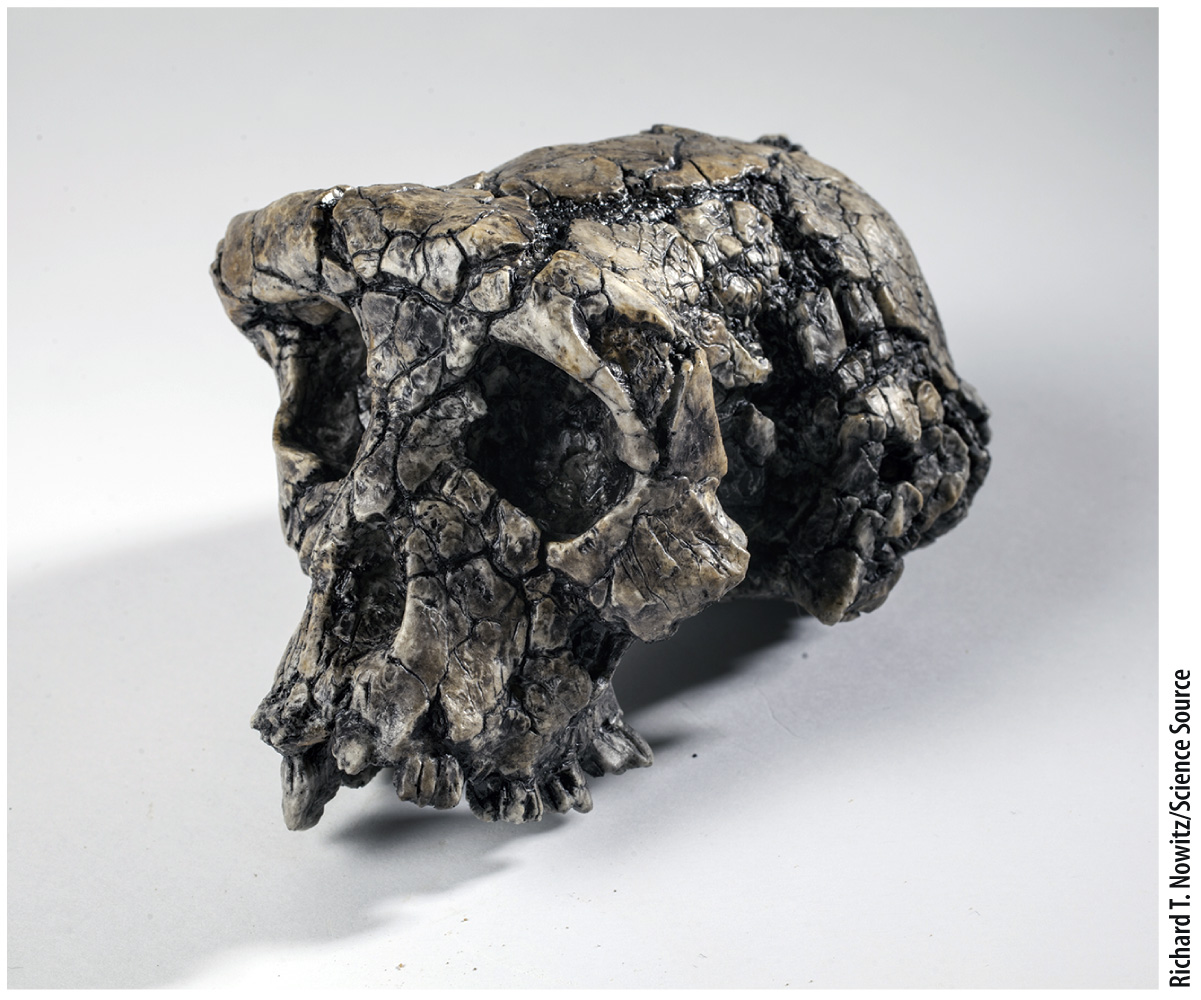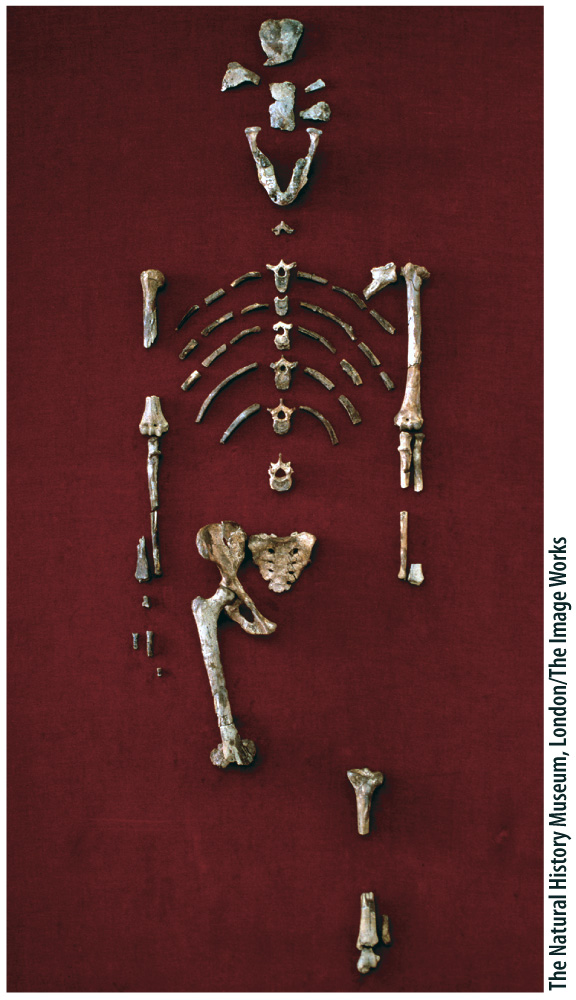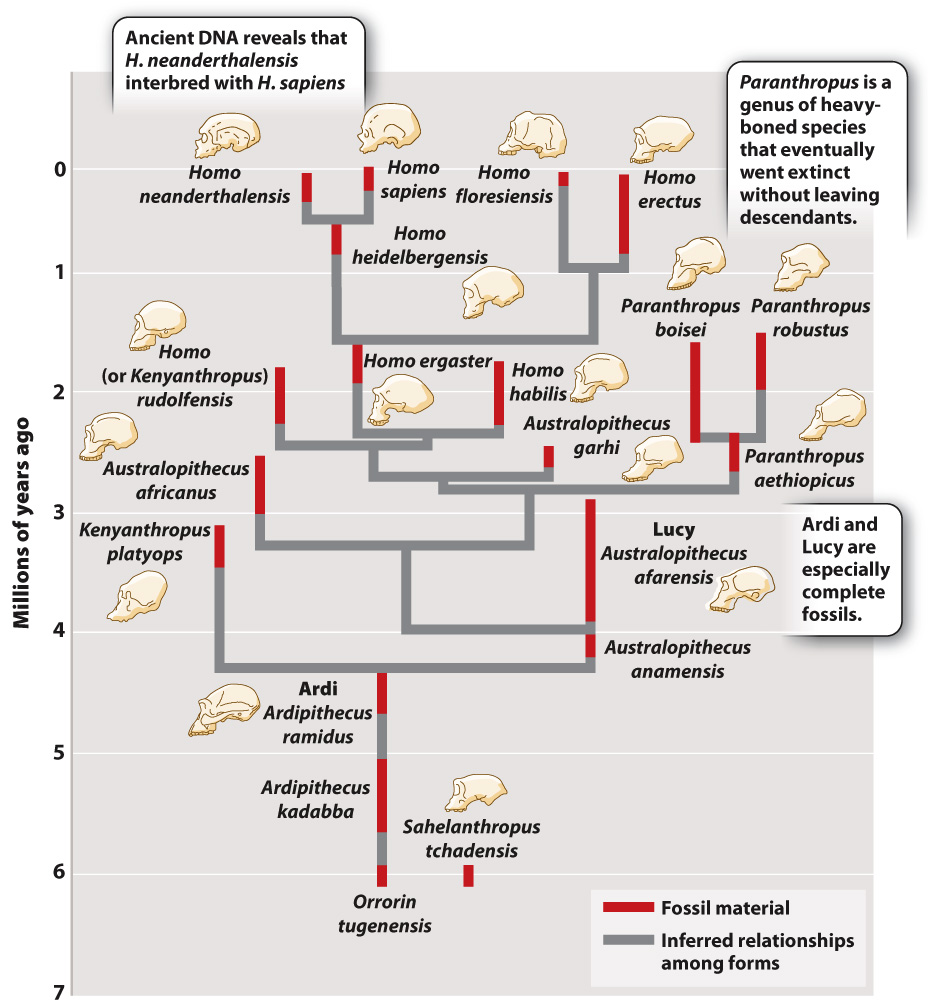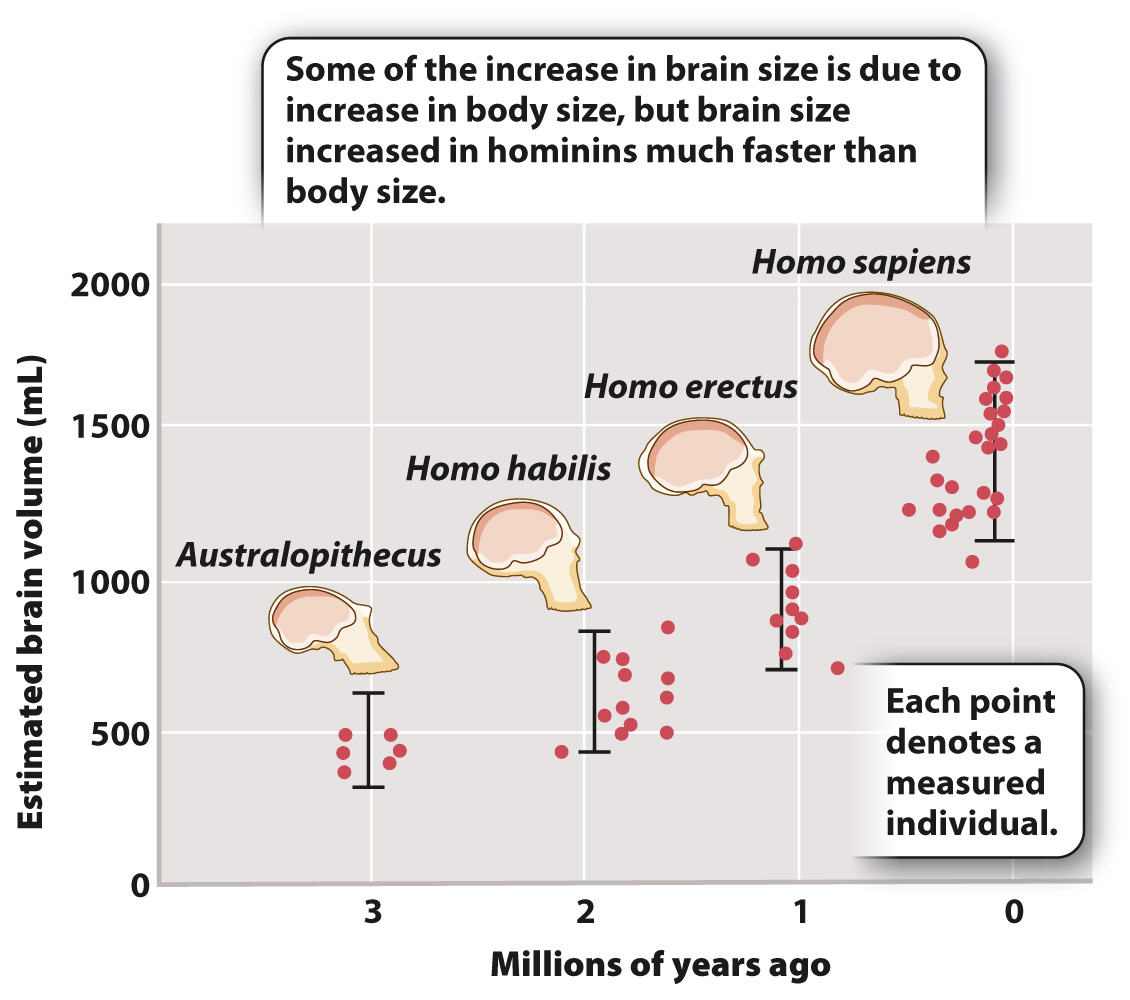The fossil record gives us direct information about our evolutionary history.
Molecular analysis is a powerful tool for comparing species and populations within species. It allows us to compare humans and chimpanzees and look at differences among groups of humans or groups of chimpanzees. However, for a full picture of human evolution, we must turn to fossils (Chapter 23).
For the first several million years of human evolution, all the fossils from the human lineage are found in Africa. This is not surprising. Charles Darwin himself noted that it was likely that the human lineage originated there, as humans’ two closest relatives, chimpanzees and gorillas, live only in Africa. The fossil material varies in quality, and a great deal of ingenuity is often required to reconstruct the appearance and attributes of an individual from fragmentary fossil material. It’s hard to determine whether two fossil specimens with slight differences belong to the same or different species. And, of course, interbreeding, the criterion that researchers most often use to define a species (Chapter 22), cannot readily be applied to fossils. As a result, experts often disagree over the details of the human fossil record—
The many different species, including modern humans, that have arisen on the human side of the split since the human/chimpanzee common ancestor are called hominins. Let’s start with the earliest known hominin, Sahelanthropus tchadensis (Fig. 24.4). Discovered in Chad in 2002, the skull of S. tchadensis combines both modern (human) and ancestral features. S. tchadensis, which has been dated to about 7 million years ago and has a chimpanzee-


An important early hominin, dating from about 4.4 million years ago, is a specimen of Ardipithecus ramidus from Ethiopia. This individual, known as Ardi, was capable of walking upright, using two legs on the ground but all four limbs in the trees.
An unusually complete early hominin fossil, Lucy, found in 1974 at Hadar, Ethiopia, represents the next step in the evolution of hominin gait: She was fully bipedal, habitually walking upright (Fig. 24.5). Her name comes from the Beatles’ song “Lucy in the Sky with Diamonds,” which was playing in the paleontologists’ field camp when she was unearthed. This fossil dates from around 3.2 million years ago. Lucy was a member of the species Australopithecus afarensis and was much smaller than modern humans, less than 4 feet tall, and had a considerably smaller brain (even when the difference in body size is taken into consideration). In many ways, then, Lucy was similar to the common ancestor of humans and chimpanzees, except that she was bipedal.
Remarkably, there were many different hominin species living in Africa at the same time. Fig. 24.6 shows the main hominin species and the longevity of each in the fossil record, along with suggested evolutionary relationships among the species. Note that all hominins have a common ancestor, but not all of these groups lead to modern humans, producing instead other branches of the hominin tree that ultimately went extinct.
A number of trends can be seen when we look over the entire record. Body size increased. Most striking is the increase in size of the cranium and therefore, by inference, of the brain, as shown in Fig. 24.7.


The earliest hominin fossils found in Asia are about 2 million years old, indicating that at least one group of hominins ventured out of Africa then. The individuals that first left Africa were members of a species that is sometimes called Homo ergaster and sometimes Homo erectus. The confusion stems from the controversies that surround the naming of fossil species. Some researchers contend that H. ergaster is merely an early form of H. erectus. Here, we designate this first hominin Homo ergaster and a later descendant species H. erectus (see Fig. 24.6). The naming details, however, are relatively unimportant. What matters is that some hominins first colonized areas beyond Africa about 2 million years ago.
Another hominin species was Homo neanderthalensis, whose fossils appear in Europe and the Middle East. Neanderthals represent a second hominin exodus from Africa dating from around 600,000 years ago. Thicker boned than us, and with flatter heads that contained brains about the same size as, or slightly larger than, ours, Neanderthals disappeared around 30,000 years ago. As we will see, genetic analysis suggests that this group likely interbred with our own group, Homo sapiens, so this disappearance was perhaps not as complete as the fossil record suggests.
Another hominin species became extinct only about 12,000 years ago. This was H. floresiensis, known popularly as the Hobbit. H. floresiensis is peculiar. Limited to the Indonesian island of Flores, adults were only just over 3 feet tall. Some have suggested that H. floresiensis is not a genuinely distinct species, but, rather, is an aberrant H. sapiens. Plenty of morphological evidence, however, suggests that H. floresiensis is a distinct species derived from an archaic Homo species, probably H. erectus. Mammals often evolve small body size on islands because of the limited availability of food.